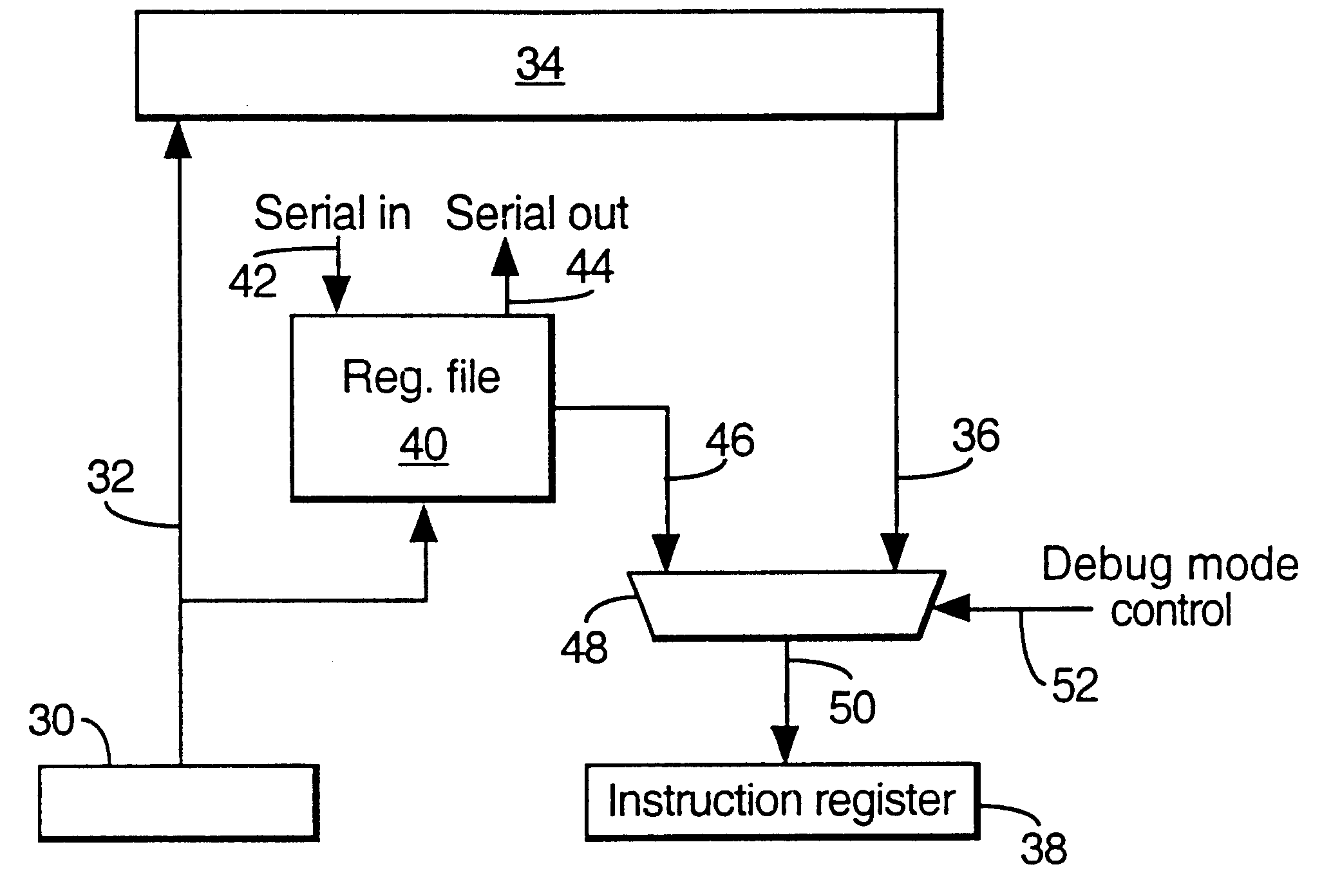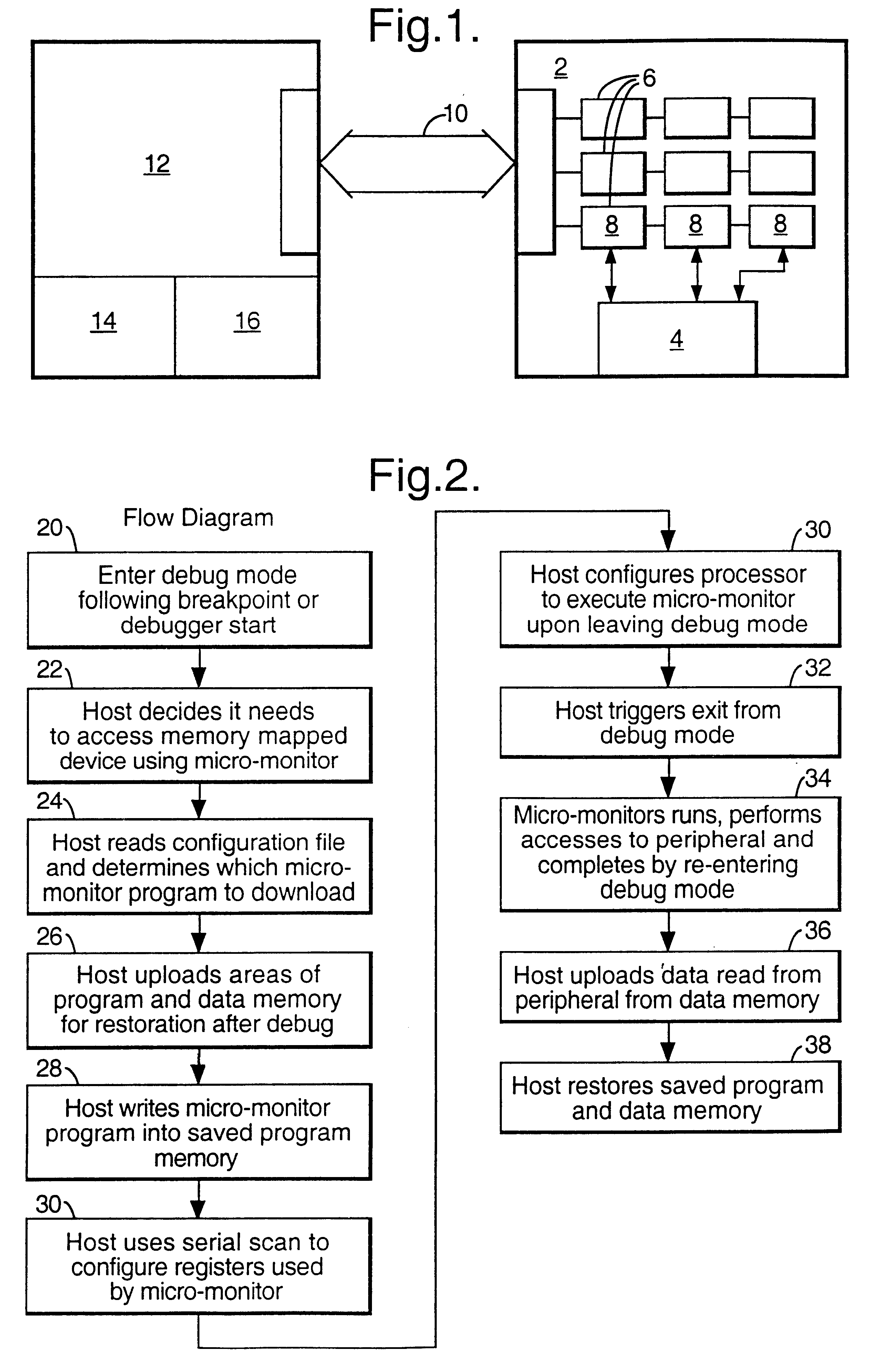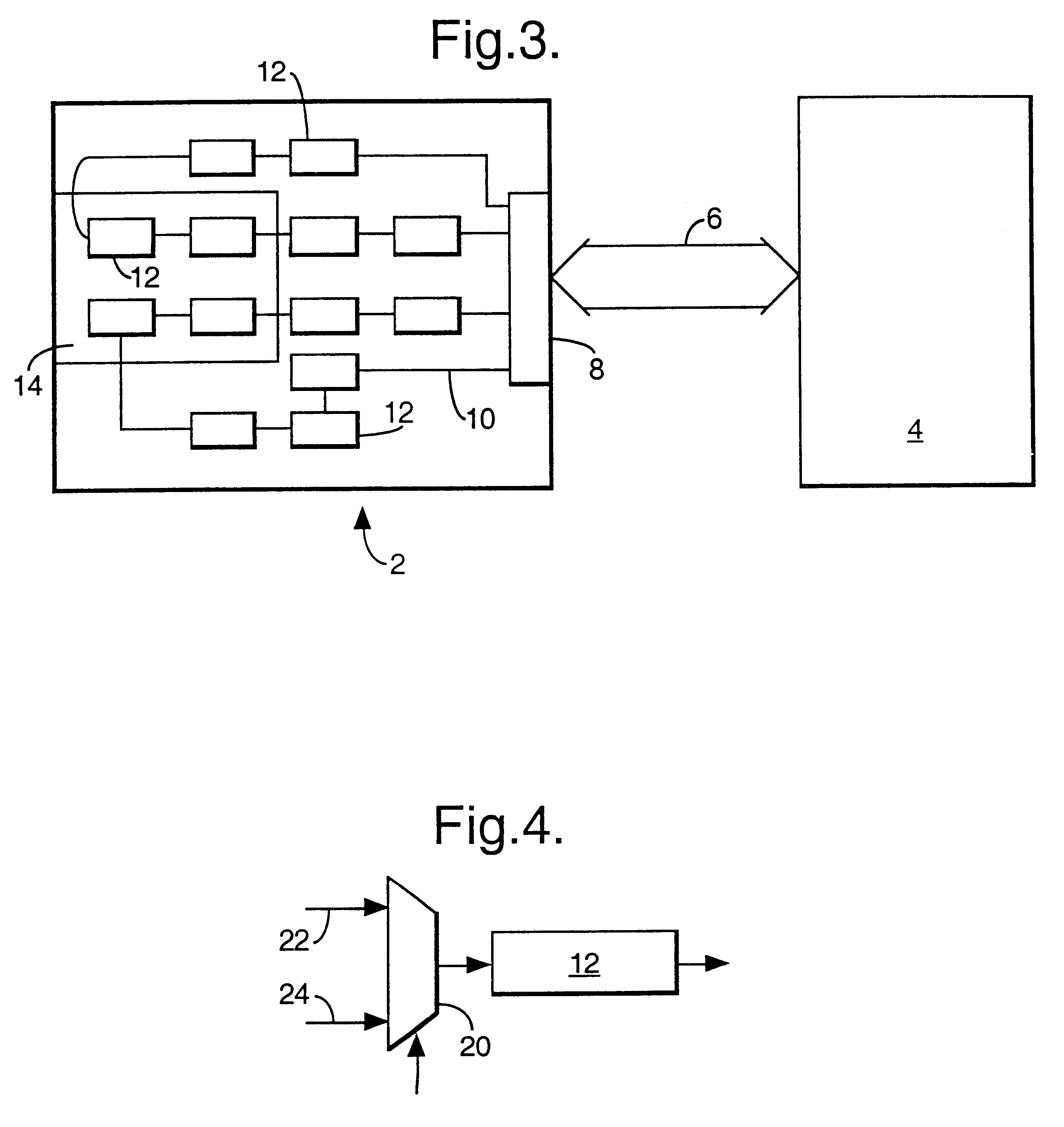Microprocessor development systems
a microprocessor and development system technology, applied in the field of microprocessor development systems, can solve the problems of reducing the available program memory space for the application program, undesirable additional cost to provide memory resources for the implementation of the monitor program, and etc., to achieve the effect of simplifying memory access, reducing the need for complex logic, and being easy to us
- Summary
- Abstract
- Description
- Claims
- Application Information
AI Technical Summary
Benefits of technology
Problems solved by technology
Method used
Image
Examples
Embodiment Construction
Referring to FIG. 1, there is shown a target processor 2 forming part of a deeply embedded application having an area of memory 4 and a series of scan chains 6 formed by coupling registers of the memory in series in the scan mode. Registers 8 of one scan chain are coupled to memory 4. The scan chains are connected to an interface 10 which is coupled to a host computer 12 and which permits a transfer of data and instructions during a debug or scan procedure. The host computer includes an area of memory 14 which includes a user-configurable file 16. In file 16 are stored data and monitor programs required for access of desired peripherals (not shown) by the target processor.
Referring now to FIG. 2, the method in accordance with the preferred embodiment of the invention is carried out as follows:
Upon entry into scanning (debug) mode as at 20, the host system (executing or operating under control of the debugger) scans data out of the target processor's scan chain and saves that informa...
PUM
 Login to View More
Login to View More Abstract
Description
Claims
Application Information
 Login to View More
Login to View More - R&D
- Intellectual Property
- Life Sciences
- Materials
- Tech Scout
- Unparalleled Data Quality
- Higher Quality Content
- 60% Fewer Hallucinations
Browse by: Latest US Patents, China's latest patents, Technical Efficacy Thesaurus, Application Domain, Technology Topic, Popular Technical Reports.
© 2025 PatSnap. All rights reserved.Legal|Privacy policy|Modern Slavery Act Transparency Statement|Sitemap|About US| Contact US: help@patsnap.com



